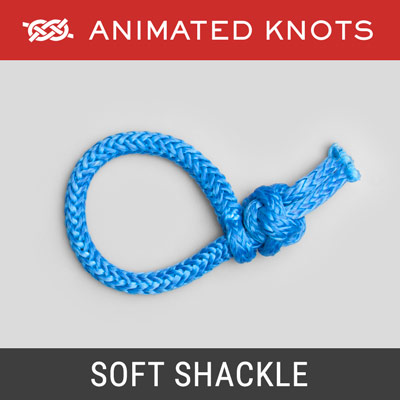This is got to be one of the weirdest knots I’ve ever tied. It’s an unholy mix of two different knots, a crown knot and a wall knot.
The knot was developed by Brian Toss. Soft shackles have been used a long time in boating but not with this exact same knot.
You can also tie them with much thinner amsteel or dyneema to make shackles similar to the same size as a carabiner
The shackles are stronger than the steel ones of the same size this one’s rated at 25 tons!
I always liked them because it’s less weight and if they fly around they don’t knock you out.
The drawback is is that they’re not as durable as steel you have to really protect the fibers from ‘picking’.
I will coat it with some sort of a coating, or a chaff guard for hydraulic lines.
The knot was developed by Brian Toss. Soft shackles have been used a long time in boating but not with this exact same knot.
You can also tie them with much thinner amsteel or dyneema to make shackles similar to the same size as a carabiner
The shackles are stronger than the steel ones of the same size this one’s rated at 25 tons!
I always liked them because it’s less weight and if they fly around they don’t knock you out.
The drawback is is that they’re not as durable as steel you have to really protect the fibers from ‘picking’.
I will coat it with some sort of a coating, or a chaff guard for hydraulic lines.








